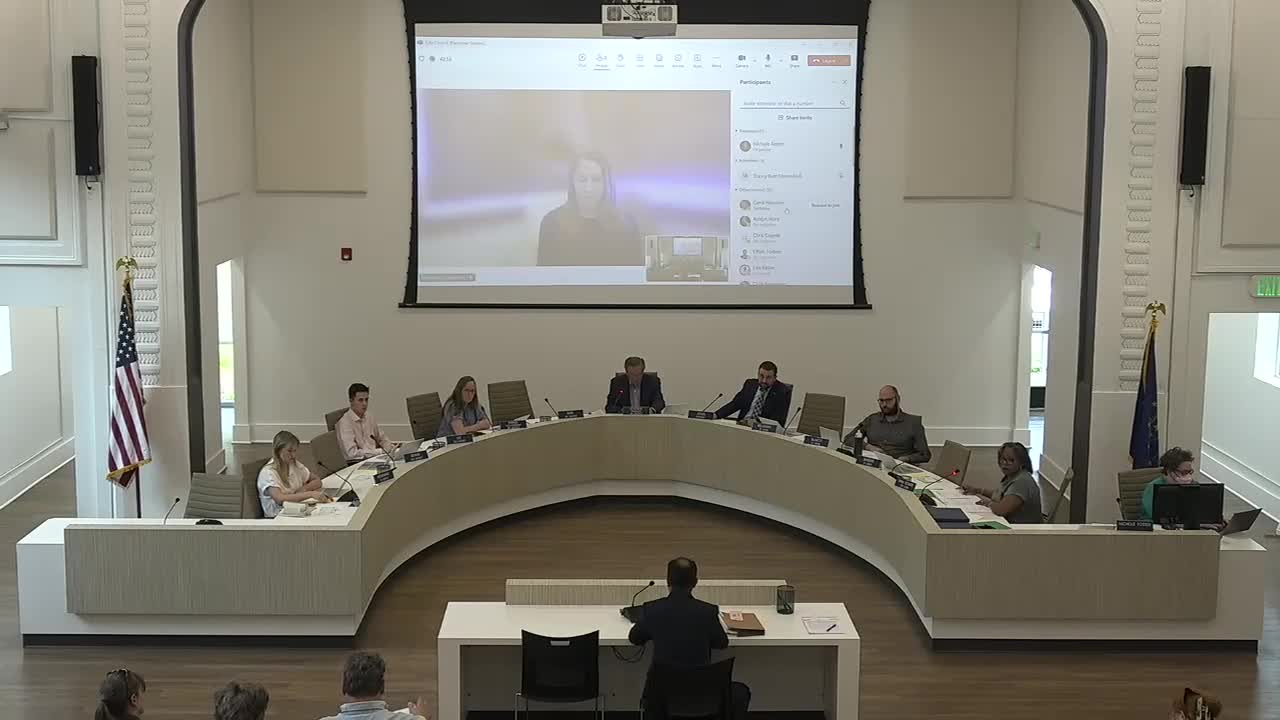West Lafayette Council Approves Ordinances for Zoning and Wastewater Treatment Limits
June 02, 2025 | West Lafayette City, Tippecanoe County, Indiana
This article was created by AI summarizing key points discussed. AI makes mistakes, so for full details and context, please refer to the video of the full meeting. Please report any errors so we can fix them. Report an error »

The West Lafayette City Council convened on June 2, 2025, to discuss several key ordinances and community concerns, particularly regarding zoning and wastewater management.
The meeting began with a presentation on a unique development plan for University Place, which aims to enhance senior living facilities in the area. The plan, developed in collaboration with city officials and the Area Planning Commission (APC), seeks to address the current capacity issues at University Place by introducing various housing options, including duplexes and townhomes. Notably, the project includes provisions for new trails connecting Celery Bog to Cason Park, with the developer contributing to the city's infrastructure.
Following this, the council voted unanimously to pass Ordinance 27-2025, which amends the Unified Zoning Ordinance to create a new residential zoning category. This change is intended to facilitate the development of smaller, more affordable lots, addressing community concerns about the use of farmland for housing. The ordinance aims to balance housing needs with land conservation efforts.
The council then moved on to discuss Ordinance 28-2025, which amends the wastewater treatment system regulations. Utility Director Dave Henderson outlined the proposed changes, which include new limits on pollutants such as chloride and fluoride, as well as a request to lower the selenium limit. These amendments are designed to protect the wastewater treatment facility and the Wabash River from potential contaminants, particularly in light of the anticipated industrial developments in the area.
Public comments during the meeting highlighted significant community concerns regarding environmental impacts, particularly related to the semiconductor industry and the potential introduction of PFAS (per- and polyfluoroalkyl substances) into the local water supply. Several residents expressed frustration over perceived negligence towards public health and environmental safety, urging the council to adopt stricter regulations and to consider the long-term implications of industrial development on the community.
In conclusion, the meeting underscored the council's ongoing efforts to address housing and environmental issues while balancing economic development. The unanimous votes on the ordinances reflect a commitment to improving community infrastructure and regulatory frameworks, though public sentiment indicates a strong desire for more stringent environmental protections as industrial activities increase in West Lafayette.
The meeting began with a presentation on a unique development plan for University Place, which aims to enhance senior living facilities in the area. The plan, developed in collaboration with city officials and the Area Planning Commission (APC), seeks to address the current capacity issues at University Place by introducing various housing options, including duplexes and townhomes. Notably, the project includes provisions for new trails connecting Celery Bog to Cason Park, with the developer contributing to the city's infrastructure.
Following this, the council voted unanimously to pass Ordinance 27-2025, which amends the Unified Zoning Ordinance to create a new residential zoning category. This change is intended to facilitate the development of smaller, more affordable lots, addressing community concerns about the use of farmland for housing. The ordinance aims to balance housing needs with land conservation efforts.
The council then moved on to discuss Ordinance 28-2025, which amends the wastewater treatment system regulations. Utility Director Dave Henderson outlined the proposed changes, which include new limits on pollutants such as chloride and fluoride, as well as a request to lower the selenium limit. These amendments are designed to protect the wastewater treatment facility and the Wabash River from potential contaminants, particularly in light of the anticipated industrial developments in the area.
Public comments during the meeting highlighted significant community concerns regarding environmental impacts, particularly related to the semiconductor industry and the potential introduction of PFAS (per- and polyfluoroalkyl substances) into the local water supply. Several residents expressed frustration over perceived negligence towards public health and environmental safety, urging the council to adopt stricter regulations and to consider the long-term implications of industrial development on the community.
In conclusion, the meeting underscored the council's ongoing efforts to address housing and environmental issues while balancing economic development. The unanimous votes on the ordinances reflect a commitment to improving community infrastructure and regulatory frameworks, though public sentiment indicates a strong desire for more stringent environmental protections as industrial activities increase in West Lafayette.
View full meeting
This article is based on a recent meeting—watch the full video and explore the complete transcript for deeper insights into the discussion.
View full meeting
